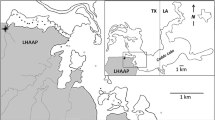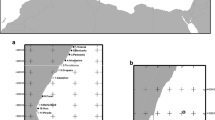Abstract
The use of small (1 m3) enclosures for providing data on the persistence and effects of chemicals in freshwater was investigated. The enclosures included an intact water column with its associated flora and fauna and provided water/air and water/sediment interfaces when placed in small ponds.
The enclosures provided a means of examining a variety of toxic effects of two chemicals, an insecticide (methyl parathion) and a herbicide (linuron), under relatively natural conditions in a replicated experiment which lasted six weeks. Toxic effects on Zooplankton, macroinvertebrates, and the flora of the enclosures were observed and compared with the results of laboratory toxicity tests and bioassays of water samples collected from the enclosures. The persistence of the two chemicals in the water in the enclosures was followed by chemical analysis and bioassay.
Experiments in enclosures could play a role in providing data to be used in the assessment of the hazard posed by chemicals: particularly in cases where the laboratory data on acute toxicity, to single species or simple associations of species, and knowledge of simple physical constants are inadequate to allow assessment of the hazard.
Similar content being viewed by others
References
Butcher JE, Boyer MG, Fowle CD (1977) Some changes in pond chemistry and photosynthetic activity following treatment with increasing concentrations of chlorpyrifos. Bull Environ Contam and Toxicol 17:751–758
Eichelberger JW, Lichtenberg JJ (1971) Persistence of pesticides in river water. Environ Sci and Technol 5:541–544
El-Dib MA, Aly OA (1976a) Persistence of some phenylamide pesticides in the aquatic environment.-I. Hydrolysis. Water Res 10:1047–1050
—— (1976b) Persistence of some phenylamide pesticides in the aquatic environment.-II. Adsorption to clay minerals. Water Res 10:1051–1053
—— (1976c) Persistence of some phenylamide pesticides in the aquatic environment.-III. Biological degradation. Water Res 10:1055–1059
Finney DJ (1971) Probit analysis. 3rd edn. Cambridge University Press p. 333
Gachter R (1979) MELIMEX, an experimental heavy metal pollution study: Goals, experimental design, and major findings. Schweiz Z Hydrol 41:169–176
Hall DJ, Cooper WE, Werner EE (1970) An experimental approach to the production dynamics and structure of freshwater animal communities. Limnol Oceanogr 15:839–928
Harding JP, Smith WA (1974) A key to the British freshwater cyclopoid and calanoid copepods. Freshwater Biol Assoc Sci Publ No. 18 2nd edn
Hodson RC, Schiff JA, Mather JP (1971) Studies of sulphate utilization by algae. Plant Physiol 17:306–311
Huribert SH, Mulla MA, Wilson HR (1972) Effects of an organophosphorus insecticide on the phytoplankton, Zooplankton, and insect populations of freshwater ponds. Ecological Monographs 42:269–299
Hutner SH (1953) In Loomis, W. E. (ed) Growth and differentiation in plants. Iowa State, College Press
Kuiper J (1977a) Development of North Sea coastal plankton communities in separate plastic bags under identical conditions. Mar Biol 44:97–107
—— (1977b) An experimental approach in studying the influence of mercury on a North Sea coastal plankton community. Helgolander wiss Meersunters 30:652–665
Lynch M (1979) Predation, competition, and Zooplankton community structure: An experimental study. Limnol Oceanogr 24:253–272
McCauley E, Briand F (1979) Zooplankton grazing and phytoplankton species richness. Field tests of the predation hypothesis. Limnol Oceanogr 24:243–252
MacKereth FJH, Heron J, Tailing JF (1978) Water Analysis. Freshwater Biol. Assoc. Sci. Publ. No. 35, 120 pp
Menzel DW, Case J (1977) Concept and design: Controlled ecosystem pollution experiment. Bull Mar Sci 27:1–7
Radford PJ (1967) Growth analyses formulae, their use and abuse. Crop Sci 7:171–175
Scourfield DJ, Harding JP (1966) A key to the British species of freshwater Cladocera. Freshwater Biological Assoc. Sci. Publ. No. 5, 3rd edn
Shannon CE, Weaver W (1949) The mathematical theory of communication. University of Illinois Press, Urbana
Smith JH, Mabey WR, Bohomos N, Holt BR, Lee SS, Chun TW, Banberger DC, Mill T (1978) Environmental pathways in selected freshwater systems. Part II. Laboratory Studies. EPA 600/7-77-113. Office of Research and Development. U.S. EPA, Athens, Georgia 30605
Tailing JF, Driver D (1963) Some problems of the estimation of chlorophylla in phytoplankton. Proc. Conf. of Primary Productivity Measurement. Marine and Freshwater, Hawaii, 1961, USAECTID. (1963). 142–146
Author information
Authors and Affiliations
Rights and permissions
About this article
Cite this article
Stephenson, R.R., Kane, D.F. Persistence and effects of chemicals in small enclosures in ponds. Arch. Environ. Contam. Toxicol. 13, 313–326 (1984). https://doi.org/10.1007/BF01055282
Received:
Revised:
Issue Date:
DOI: https://doi.org/10.1007/BF01055282




